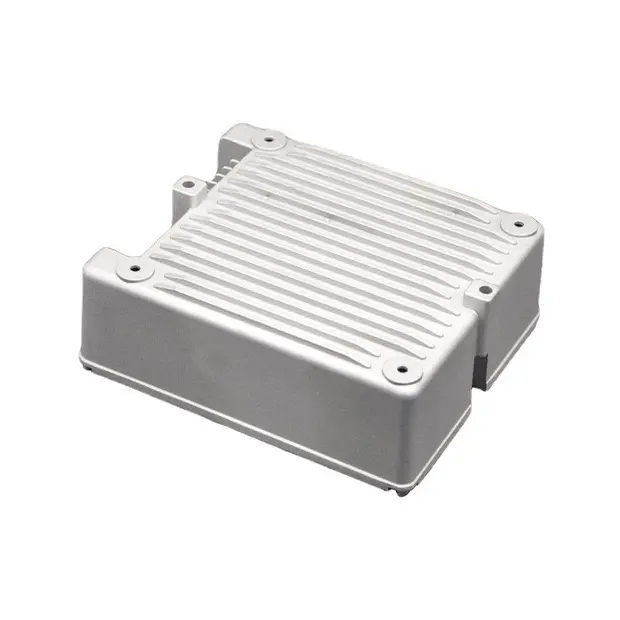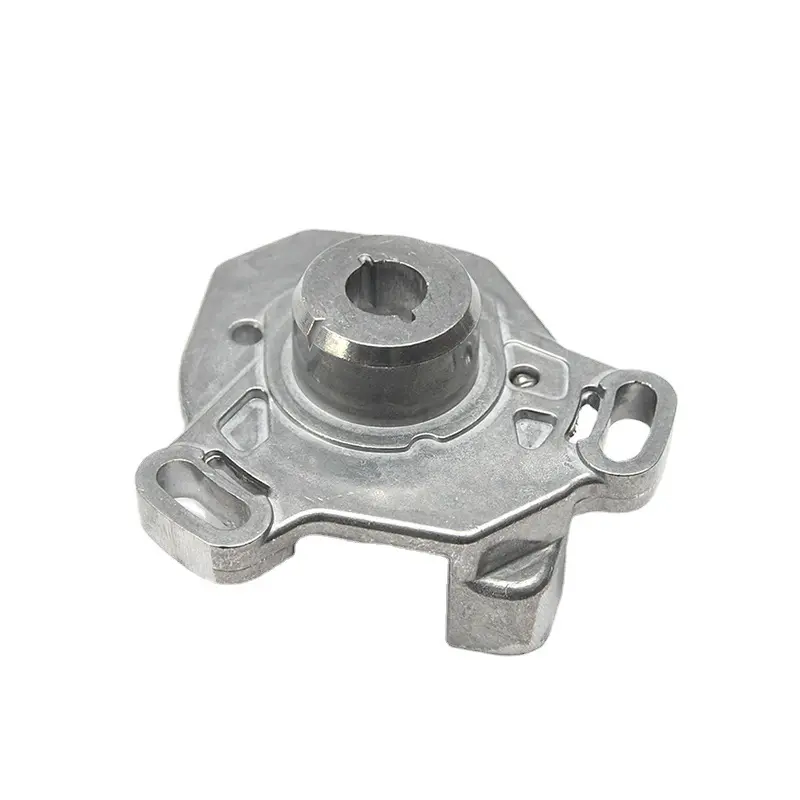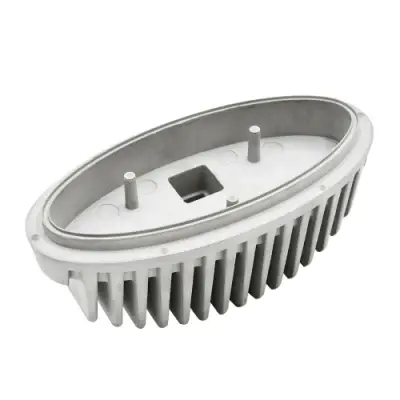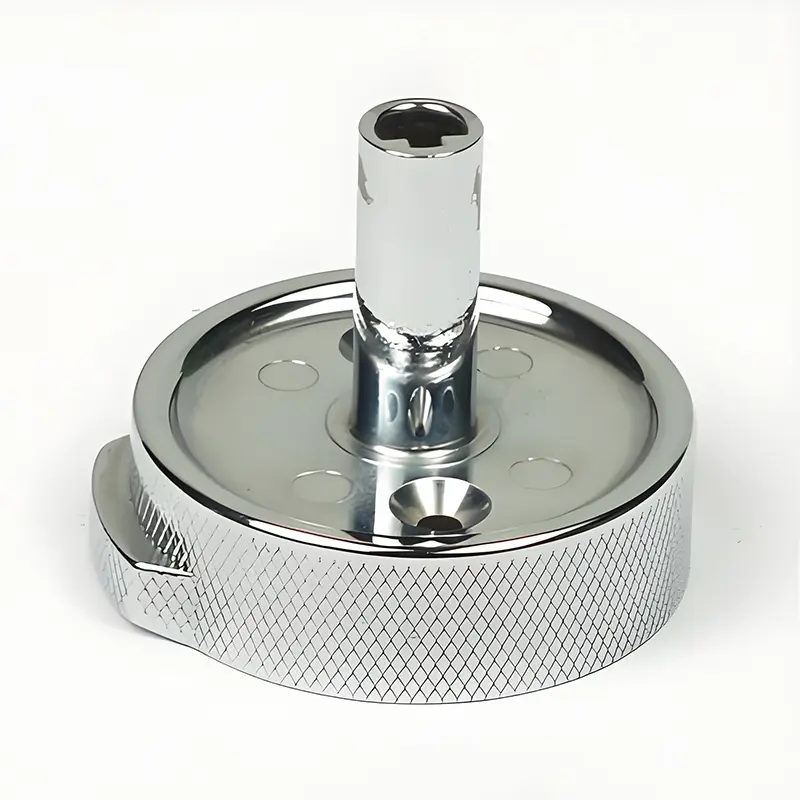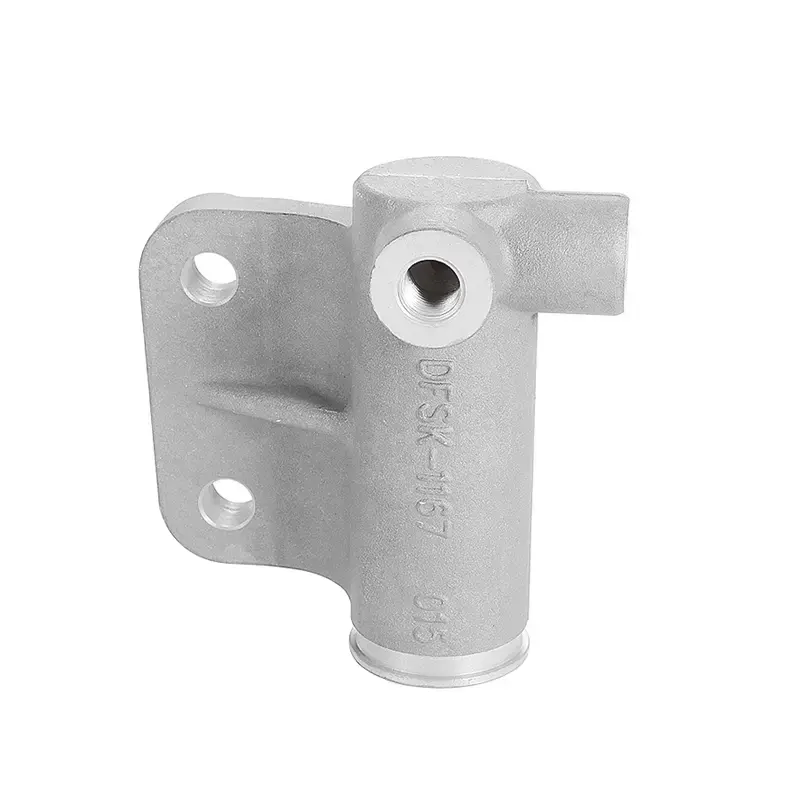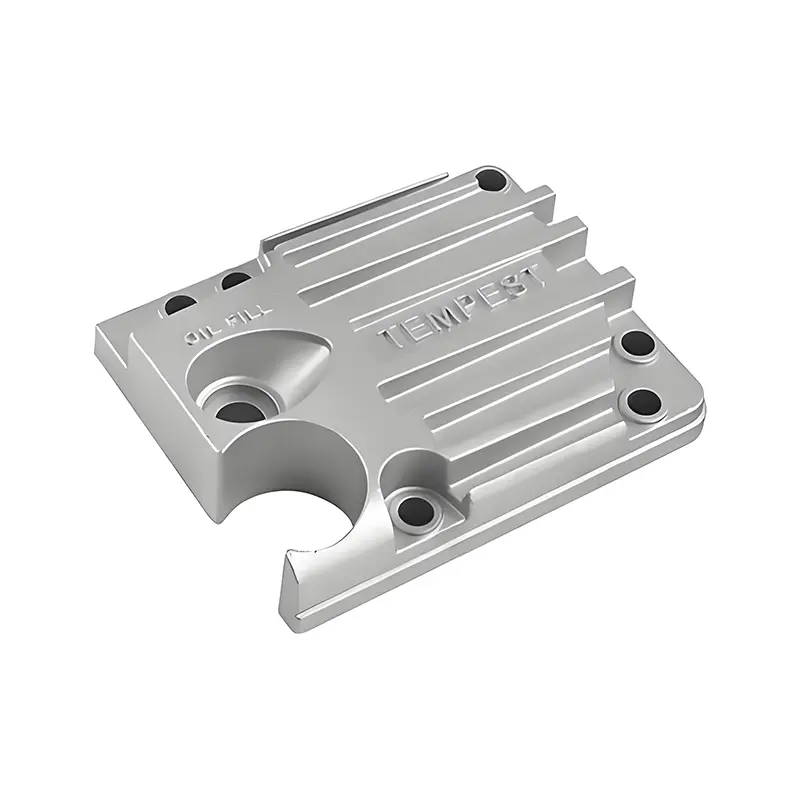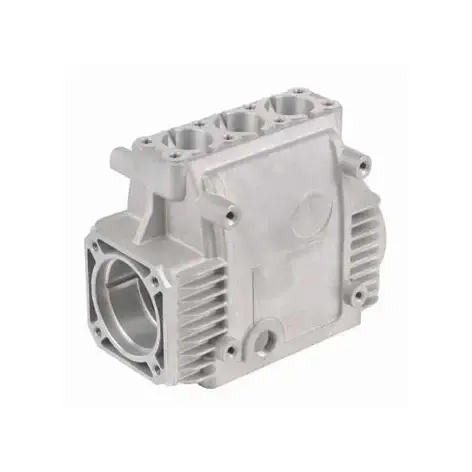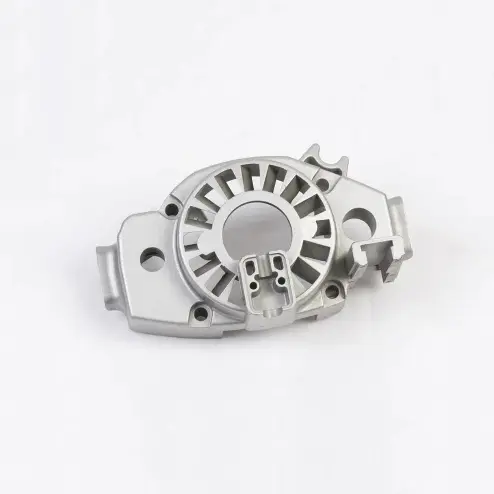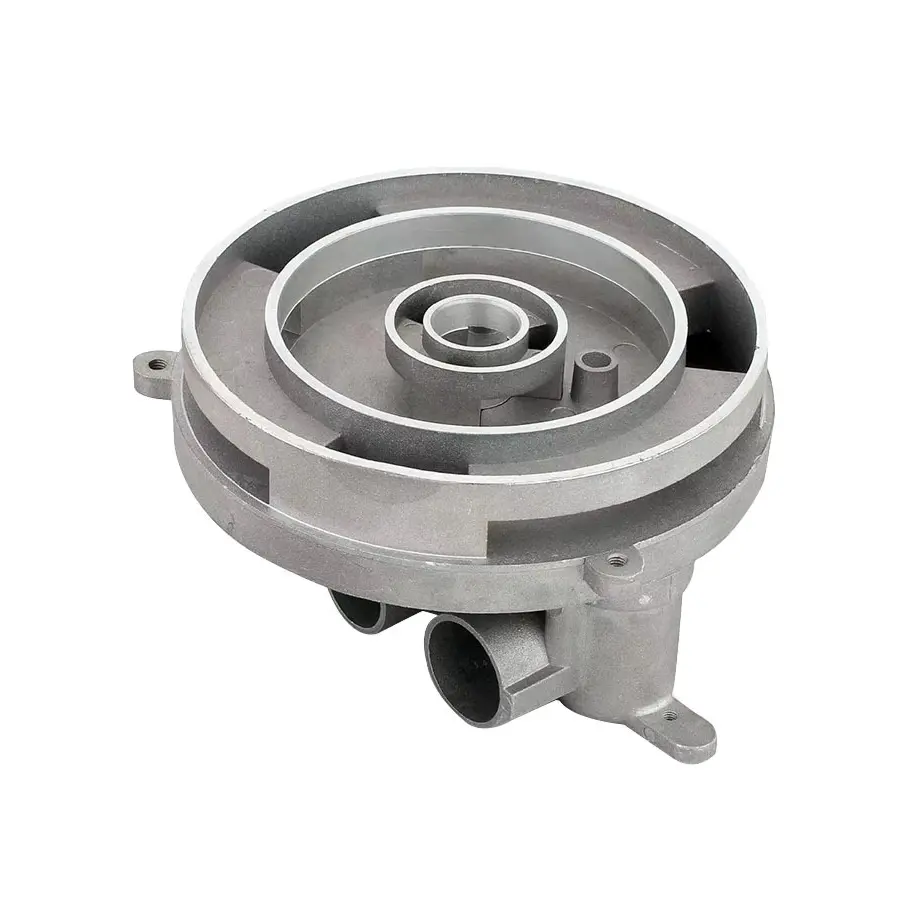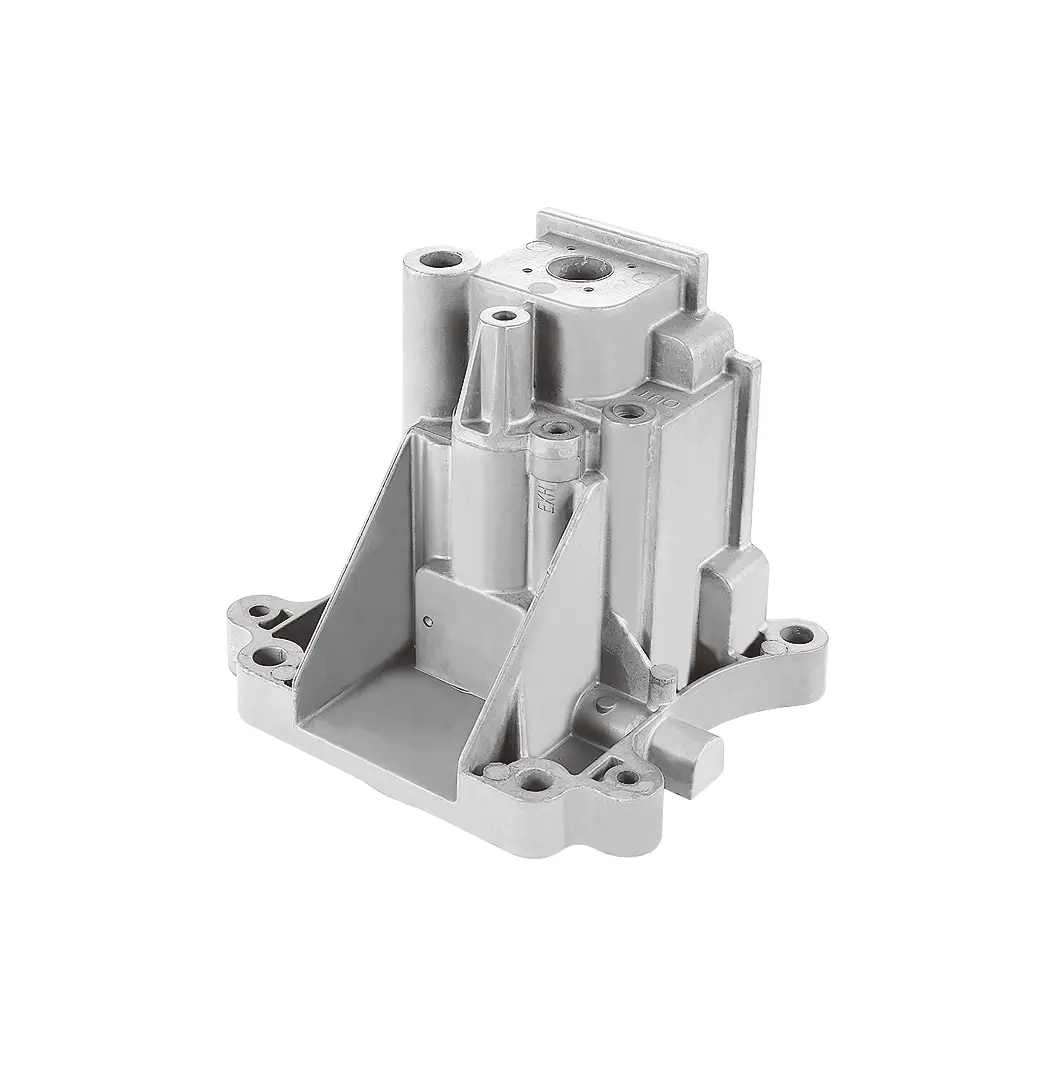 +86-13516964051
+86-13516964051 The Complete Die-Casting Aluminum Alloy Process
The Complete Die-Casting Aluminum Alloy Process: Professional Analysis from Design to Finished Product, Assisting Buyers with Accurate Product Selection
Amidst the globalization of manufacturing, die-cast aluminum alloys, with their advantages of lightweight, high strength, and high cost-effectiveness, have become a core material in the automotive, electronics, medical device, and new energy sectors. As a professional die-cast aluminum alloy supplier, we understand that when selecting a partner, buyers prioritize not only product quality but also the standardization and controllability of the production process. This article will provide a comprehensive breakdown of the entire die-casting aluminum alloy process, from early design to final product testing, revealing how standardized processes ensure product quality, helping buyers quickly assess supplier capabilities and mitigate partnership risks.
1. Early Stage: Design and Material Selection - The Foundation for Product Performance
The success of die-casting aluminum alloy production begins with scientific early planning. The core goal of this stage is to avoid late-stage production defects through precise design and appropriate material selection, while maximizing product cost-effectiveness.
1. Product and Mold Design (DFM Analysis)
The design phase is the soul of the die-casting process, directly impacting product precision, production efficiency, and cost. We employ a DFM (Design for Manufacturing) approach, collaborating with structural engineers and die-casting technicians to design the Die Casting Process, focusing on three key issues:
Structural optimization: Avoid excessively thick or thin walls (ideal wall thickness range is 2-5mm, adjusted based on product size) to reduce defects such as shrinkage and air holes; design a reasonable draft angle (typically 1-3°) to ensure smooth demolding and minimize mold wear; and incorporate reinforcing ribs for complex structures to enhance product strength while preventing deformation.
Gate and vent system design: Determine the gate location based on the product shape (preferably within the thick wall to ensure smooth metal filling). Design the appropriate gate dimensions (calculated using flow simulation software to avoid excessive flow velocity and air entrapment). Vents should cover all corners of the mold cavity, with a depth of 0.05-0.1mm to ensure complete evacuation of air and improve product density. Mold Material and Lifespan Planning: H13 hot-work die steel (hardness 50-52 HRC) is used for the mold cavity, and the surface is nitrided (nitride layer thickness 0.1-0.2mm) to extend the mold life to 50,000-100,000 cycles. For batch orders, a mold maintenance plan is designed in advance to ensure stable mold precision during production.
2. Aluminum Alloy Material Selection: Matching Different Industry Needs
The performance requirements of die-cast aluminum alloys vary greatly in different application scenarios. We offer a variety of material grades and provide professional selection recommendations to buyers:
ADC12 (Al-Si-Cu system): The most commonly used grade, with good fluidity and excellent die-casting formability, is suitable for products with medium-strength requirements, such as electronic housings and automotive parts (such as brackets and gearboxes). It has a tensile strength of ≥220 MPa and an elongation of ≥3%. A380 (Al-Si-Cu): High hardness and wear resistance, suitable for parts subject to heavy loads (such as motor end caps and hydraulic components). Tensile strength ≥ 240 MPa, Brinell hardness ≥ 80 HB. A356 (Al-Si-Mg): Excellent casting and weldability. T6 heat treatment significantly increases strength (tensile strength ≥ 320 MPa). Suitable for products requiring high strength and corrosion resistance, such as new energy vehicle battery housings and medical device components. Material Testing Standards: All raw materials comply with international standards such as ASTM, EN, and GB. Each batch of material is provided with a compositional analysis report (spectral analysis) to ensure that the content of key elements such as Si, Cu, and Mg is within the specified range, guaranteeing product performance from the source.
2. Core Process: Die Casting Production - Precision Control is the Key to Quality
The die casting process is the core step in transforming the design into a physical object. Strict parameter control is required to ensure stable metal filling, forming, and cooling processes, minimizing defects. We use a cold chamber die-casting machine (suitable for medium- and high-melting-point alloys such as aluminum alloys) coupled with an automated control system to ensure traceable parameters throughout the entire process.
1. Molten Metal Melting and Holding: Ensuring Compositional Homogenity and Fluidity
Melting Process: Aluminum alloy raw materials (pure aluminum ingots, master alloy, and recycled material) are charged proportionally into a medium-frequency induction furnace (controlled at 720-750°C). Refining agents (such as hexachloroethane) are added to remove impurities and gases. Stirring is performed for ≥5 minutes to ensure uniform composition. After melting, an online degassing device (rotary injection method) is used to further reduce the gas content (hydrogen content ≤ 0.15ml/100gAl) to prevent porosity in the product.
Hot Holding: The melted metal is transferred to a holding furnace and maintained at 680-720°C for no more than 4 hours to prevent alloying element burnout. Before each pour, samples are taken to test the molten metal's fluidity (using a spiral test specimen; a fluidity reading of ≥600mm is considered acceptable) to ensure it meets die-casting requirements.
2. Die Casting: Precise Control of Four Key Parameters
The die casting process requires real-time monitoring of four key parameters: pressure, temperature, speed, and time. We implement closed-loop control using a PLC control system. Specific standards are as follows:
Injection Pressure: Adjusted based on product size, the injection pressure for small parts is controlled at 30-50 MPa, while for large parts (such as automotive structural parts), it is increased to 80-120 MPa. This ensures that the molten metal fully fills the mold cavity and reduces shrinkage.
Injection Speed: This process is divided into slow and fast shot stages. Slow shot speeds are 0.3-0.5 m/s (to avoid metal splashing), while fast shot speeds are 2-5 m/s (to quickly fill the mold cavity and prevent premature setting). Precise control of the speed switching point improves product surface quality. Mold Temperature: A mold temperature controller is used to control the mold temperature. During the preheating phase, the mold temperature is raised to 150-200°C and maintained at 200-250°C during production (for ADC12 material). This prevents premature solidification of the molten metal due to low mold temperatures, or mold sticking due to high mold temperatures.
Dwelling and Cooling Time: The holding time is determined based on the product wall thickness (for every 1mm increase in wall thickness, the holding time increases by 0.5-1s) to ensure stable cavity pressure and minimize volume shrinkage. The cooling time is controlled between 10-30s. Demolding is performed after the product temperature drops below 300°C to prevent deformation.
3. Demolding and Blank Cleaning: Reduce Manual Intervention, Improve Efficiency
Automated Demolding: Demolding is performed using a robot with suction cups or clamps. The demolding force is controlled between 500-2000N (adjusted according to product weight) to prevent scratches or deformation caused by manual demolding. After demolding, a high-pressure water jet (pressure 0.8-1.2MPa) is used to remove residual release agent and scale from the product surface.
Gate and Flash Removal: For batch production, gates and flash are removed using a dedicated punching die (punching pressure 5-20T) with an accuracy of ±0.1mm. Complex products are refined using a CNC milling machine to ensure smooth edges that meet assembly requirements.
3. Post-Processing: Improving Product Performance and Appearance - Meeting Diverse Needs
Die-cast blanks require post-processing to meet the standards of various industries. We offer customized post-processing solutions covering surface treatment, heat treatment, precision machining, and more, meeting buyers' diverse product performance and appearance requirements.
1. Heat Treatment: Optimizing Product Mechanical Properties
Depending on product requirements, we offer a variety of heat treatment processes, each focused on improving strength, hardness, or toughness:
T4 Treatment (Solution Treatment + Natural Aging): The product is heated to 520-540°C, held for 2-4 hours, rapidly water-cooled, and then naturally aged for 48 hours. This treatment is suitable for products requiring high plasticity (such as bent parts) and can increase elongation to 8%-12%.
T6 Treatment (Solution Treatment + Artificial Aging): After solution treatment, artificial aging is performed at 120-180°C for 6-12 hours. This treatment is suitable for products requiring high strength (such as new energy vehicle components). It can increase the tensile strength of A356 to over 320 MPa and the hardness to 90-110 HB.
Heat Treatment Testing: Mechanical property testing (tensile and hardness testing) is performed on samples from each batch of product, and a test report is provided to ensure that the performance meets customer requirements.
2. Surface Treatment: Balancing Aesthetics and Corrosion Resistance
Surface treatment not only enhances product appearance but also strengthens corrosion resistance and extends product life. We offer the following mainstream surface treatment processes:
Anodizing: Anodizing in a sulfuric acid solution creates an oxide film with a thickness of 5-20μm. This film can be dyed (silver, black, gold, etc.) and has salt spray resistance for ≥48 hours. It is suitable for electronic product casings and household items.
Powder Coating (Electrostatic Spraying): Using epoxy resin powder, the coating is applied to a thickness of 60-120μm and cured at high temperatures (180-200°C for 15-20 minutes). It offers excellent impact and weather resistance and is suitable for outdoor equipment casings and automotive interiors.
Electroplating (Zinc Plating, Chrome Plating): A metal coating (5-15μm thick) is formed on the product surface, improving conductivity and wear resistance. It is suitable for connectors and precision components and is RoHS compliant. Surface Quality Inspection: Adhesion testing (cross-cut method, adhesion grade ≥ 4B), salt spray testing, and colorimetry are performed to ensure the surface treatment is stable and meets international standards.
3. Precision Machining: Achieving High-Precision Assembly Requirements
For products requiring high-precision assembly (such as motor bearing housings and hydraulic valve blocks), we utilize CNC machining centers for precision machining and coordinate measuring machines (accuracy ±0.005mm) for dimensional inspection, ensuring that critical dimensional tolerances are within ±0.01mm to meet customer assembly requirements.
4. Quality Inspection: Full-Process Monitoring – Preventing Substandard Products
Quality is a top concern for buyers. We have established a "full-process inspection system" with inspection points at every stage, from raw materials to finished product, to ensure that substandard products do not enter the next process.
1. Raw Material Testing
Spectroscopic Analysis: Detects aluminum alloy composition to ensure that the content of elements such as Si, Cu, and Mg meets grade standards.
Density Testing: Measure the density of molten metal using the water displacement method to indirectly determine gas content (density ≥ 2.6 g/cm³ is acceptable).
Metallographic Analysis: Observes the metal structure to ensure the absence of significant segregation and inclusions.
2. Process Inspection
First Article Inspection: Before each production shift, the first article undergoes full-dimensional inspection (three-dimensional coordinate measurement) and visual inspection (visual inspection and magnification). Only after confirming that the parameters are correct can mass production begin.
Process Inspection: Sample inspection is conducted every 100 pieces produced, focusing on key dimensions and surface defects (such as pores and cracks). Any abnormalities detected are immediately stopped and adjusted.
Mold Inspection: Wear inspection is performed on the mold cavity, gate, and venting slots every 5,000 molds. Wear parts are repaired or replaced promptly.
3. Finished Product Inspection
Dimensional Inspection: 100% full-dimensional inspection (automated inspection equipment + manual review) to ensure dimensional tolerances meet drawing requirements;
Mechanical Property Testing: Tensile and hardness tests are performed on random samples to verify product strength and hardness;
Non-destructive Testing: X-ray inspection (detecting internal pores and shrinkage) and penetrant testing (detecting surface cracks) are performed on key load-bearing components (such as automotive structural parts);
Environmental Testing: Salt spray testing (corrosion resistance), high and low temperature testing (weather resistance), and vibration testing (structural stability) are performed according to customer requirements.
4. Factory Inspection
All finished products undergo final inspection before shipment:
Appearance Inspection: Visual inspection to ensure the surface is free of scratches, deformation, and color difference;
Packaging Inspection: Confirm that the packaging method (anti-static packaging, rust-proof packaging) meets transportation requirements to prevent damage during transportation;
Complete Documentation: Inspection reports (material report, dimensional report, performance report) are provided with the shipment to meet buyers' traceability requirements.
V. Why choose us as your die-cast aluminum alloy supplier? Guaranteed Cooperation for Buyers
As a supplier with 10 years of die-casting experience, we not only master standardized processes but also offer customized solutions to address your purchasing needs:
Technical Strength: Our team of 20 professional engineers provides design, function, and optimization (DFM) optimization and customized process solutions, helping buyers reduce design costs and improve product performance.
Stable Production Capacity: Equipped with 15 cold-chamber die-casting machines (80-1600 tons clamping force), our monthly production capacity reaches 500,000 pieces, enabling us to meet large-volume orders with a shortened delivery time of 7-15 days.
Quality Traceability: Our MES production management system ensures that every product is traceable back to production time, equipment, operator, and test data, ensuring consistent quality control.
International Certifications: We are ISO 9001 certified and IATF 16949 certified for the automotive industry. Our products comply with RoHS and REACH environmental standards and are exportable to major global markets.
After-Sales Service: We offer... During the 20-year warranty period, if any quality issues arise, we will respond within 24 hours and provide solutions within 48 hours, so that buyers have no worries.








